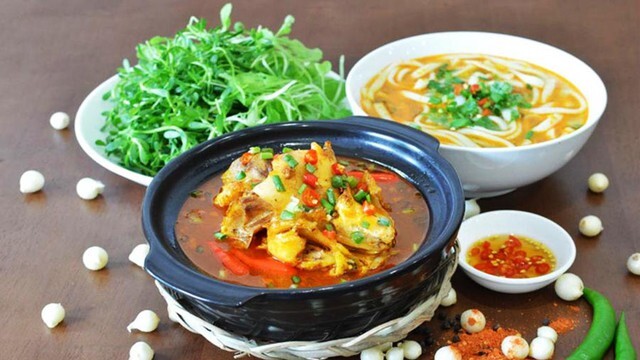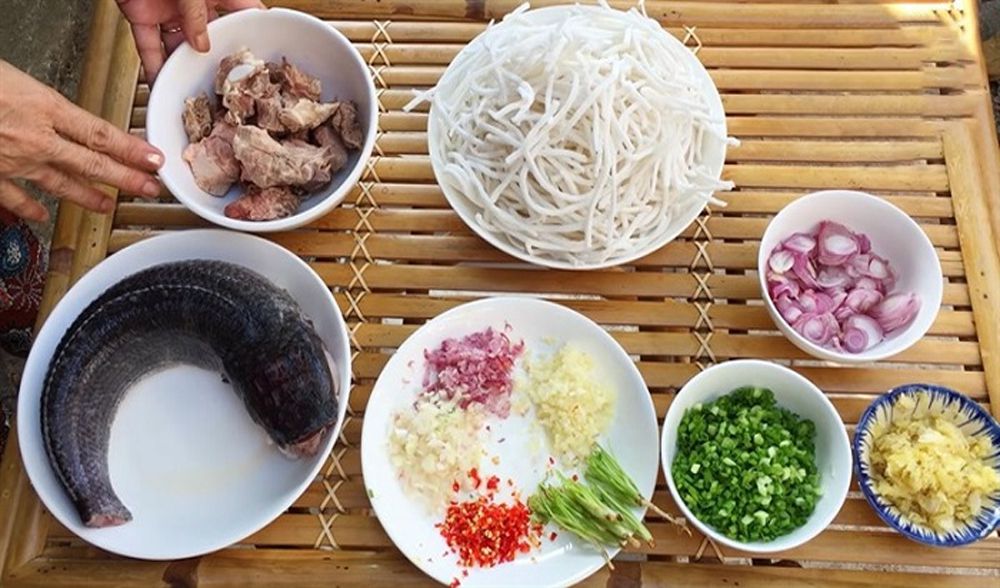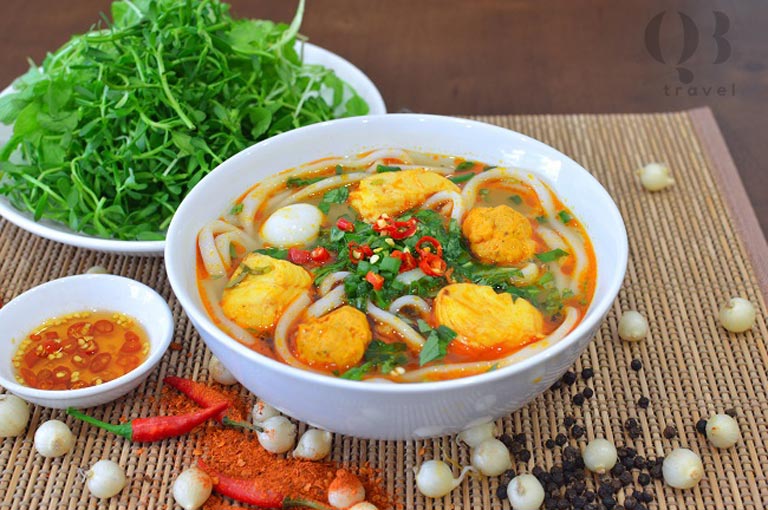Cháo Canh
1. What is Cháo Canh?
Cháo Canh is a beloved noodle soup dish from Quảng Bình province in central Vietnam. Despite its name, it is not a porridge ("cháo" usually means rice porridge in Vietnamese), but rather a thick noodle soup made with hand-rolled noodles and a flavorful broth. This rustic and comforting dish is a daily favorite for locals and a must-try for visitors wanting an authentic taste of the region.
2. Characteristics of Cháo Canh
The dish is known for its soft, chewy noodles and slightly thick, savory broth. Unlike clear noodle soups like phở or bún, Cháo Canh has a mild thickness, somewhat like Japanese udon soup or a thin porridge. The soup is usually golden or orange in color due to the use of annatto oil or shrimp, and it has a subtle sweetness from pork or fish. It is often served with chili powder or fresh lime to add extra flavor.
3. Ingredients and How It’s Made
The main ingredients in Cháo Canh are simple but carefully prepared:
-
Noodles: Made from a mixture of rice flour and sometimes wheat flour. The dough is rolled by hand and cut into thick strands, similar to udon.
-
Broth: Usually made from pork bones, fish, or crab. Some versions include ground pork or fish cakes.
-
Protein: Common additions include pork slices, shrimp, crab meat, or snakehead fish (cá lóc).
-
Garnishes: Chopped green onions, coriander, fried shallots, and black pepper.
-
Seasoning: Fish sauce, salt, and sometimes annatto oil for color.
The noodles are boiled directly in the broth, which makes the soup naturally thicker due to the starch from the flour.
4. How to Enjoy Cháo Canh
Cháo Canh is usually eaten hot, often for breakfast or lunch. It is served in a bowl with a generous amount of noodles and toppings. Many locals add a bit of chili flakes, pepper, or a squeeze of lime for extra flavor. In Quảng Bình, a side of fried breadsticks (quẩy) is sometimes served to dip into the soup. Some versions also come with a small bowl of fish sauce with sliced chili for dipping the meat.
You can find Cháo Canh in small roadside eateries or family-run restaurants throughout Đồng Hới City and surrounding areas.
5. Cultural Importance
Cháo Canh is a proud symbol of Quảng Bình’s home-style cooking. It reflects the region’s culinary style—simple ingredients, handmade methods, and deep flavors. For locals, it is a comfort food that reminds them of home and childhood. For visitors, it offers a chance to experience the warmth and hospitality of central Vietnam through its food. Many travelers come back to Quảng Bình not just for the caves, but also for a bowl of this humble, heartwarming soup.




